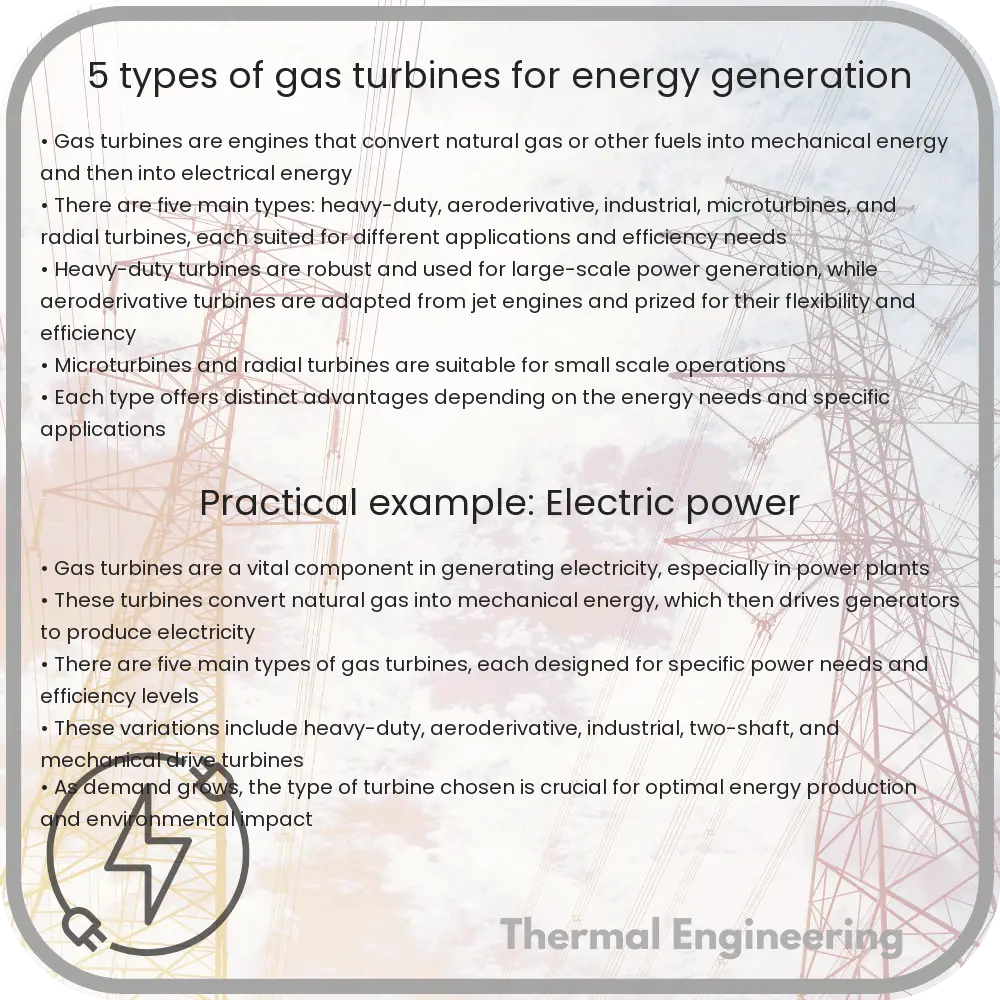Learn about the role and types of gas turbines in energy generation, from aircraft-derivative to microturbines.

Understanding Gas Turbines for Energy Generation
Gas turbines play a pivotal role in energy generation, known for their efficiency and capability to use a variety of fuels. These machines convert natural gas or other fuels into mechanical energy, which then drives a generator to produce electricity. Here, we explore five fundamental types of gas turbines used across various industries for power generation.
1. Aircraft-Derivative Gas Turbines
Aircraft-derivative gas turbines are adapted from jet engines to meet the demands of power generation and mechanical drives. These turbines are favored for their high power-to-weight ratio, compact design, and rapid start-up capabilities. They are commonly used in situations where quick, reliable power is needed, such as in emergency power supply or peak-load power plants.
2. Heavy-Duty Gas Turbines
Heavy-duty gas turbines are robust and designed for continuous use in the electric power generation sector. They are engineered to handle large capacities, making them suitable for baseload power generation. Besides electricity, these turbines also contribute to cogeneration, where both electricity and heat are simultaneously produced, enhancing overall efficiency.
3. Industrial Gas Turbines
Slightly smaller than heavy-duty models, industrial gas turbines are utilized in various applications, including small power plants and as mechanical drives for industrial processes. These turbines are versatile in terms of size, ranging from a few megawatts to hundreds of megawatts. Their flexibility makes them ideal for a range of industrial uses beyond power generation, such as powering compressors and large pumps.
4. Aeroderivative Gas Turbines
A subset of aircraft-derivative turbines, aeroderivative gas turbines are specifically modified for non-aviation applications, including marine propulsion and high-speed trains. They are particularly valued for their efficiency and quick start capabilities, which are critical in supporting grid stability and integrating renewable energy sources which may be intermittent.
5. Microturbines
Microturbines are small-scale turbines designed for lower capacity applications, typically ranging from 30 kilowatts to 200 kilowatts. They are an excellent choice for small businesses, residential complexes, or remote locations where large power infrastructure is impractical. Due to their compact size, they can operate in places inaccessible to larger models and are often used in combined heat and power (CHP) configurations to maximize efficiency.
Conclusion
Gas turbines are a fundamental component of modern energy generating systems, tailored to meet specific operational needs across different sectors. From the compact microturbines to the powerful heavy-duty types, these engines support a wide range of power generation requirements, contributing significantly to the efficiency and reliability of energy supply worldwide.